Four key changes for 2023 that emerged in F1 testing
With a full season to get used to F1's new regulations, teams are focusing on upgrades to a few key areas. Lawrence Butcher examines where their development budget has gone
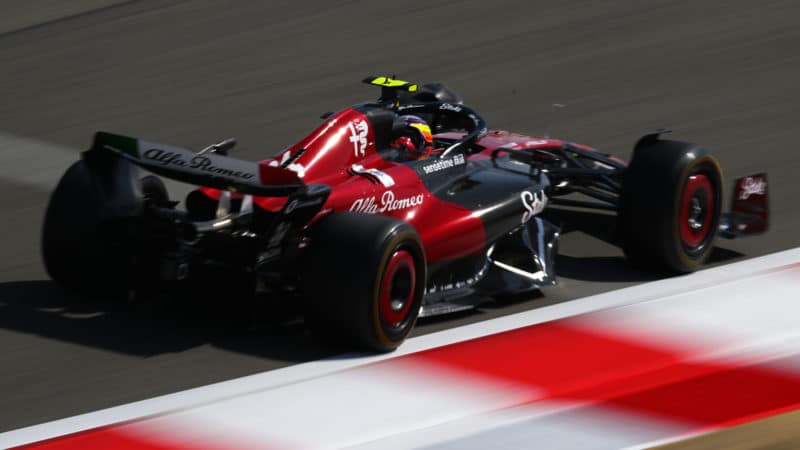
Paint – or lack of it – and floors are two big areas of development concern for teams in 2023
F1 2023 kicked off with just three short days of testing for teams in Bahrain, with the traditional two sessions in Spain dropped in the name of cost, weather and an increasingly hectic calendar. As ever, testing gave the first real opportunity to see each team’s new designs; though with the usual caveat that most will still bring updates for the opening GP next weekend.
Following the all-change of 2022, teams have had a season to gain a greater understanding of the complete aerodynamic rewrite and refine, or in some cases, completely alter their concepts. However, as was the case last year, there are several key areas that have seen heavier development than others, thanks to their sizeable impact on performance. It is also noteworthy that the big-three – Red Bull, Mercedes and Ferrari – appear to have further fettled their 2022 concepts, rather than start afresh. Glancing across the rest of the grid, it seems the competition favours Red Bull’s approach with many features, not least sidepod design, previewed in 2022 popping up elsewhere for 2023.
Floors
As Alpha Tauri technical director Jody Egginton explained to the author last year, the floor is the most dominant performance element on the cars and even quite subtle design changes can have a significant impact on downforce. The importance of these details, and paranoia that someone would copy their homework, was evident pre-season with teams such as McLaren going to some lengths to hide its floor edge designs until the cars rolled out in Bahrain.
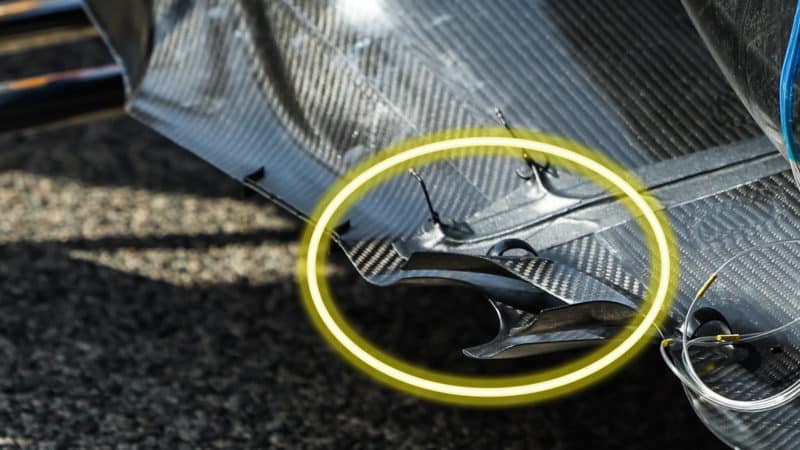
Red Bull’s stacked floor winglets are new for 2023
DPPI
The edge of the floor has a variety of roles to play, with many complex interactions occurring within the plethora of different flow structures. Outwashing air from the front section of the floor can be used to keep the front wheel wakes from being ingested into the vital flows around the side pod undercut and onto the rear diffuser. Similarly, the generation of vortices as well as high- or low-pressure areas can also be harnessed to keep high energy flow where it is most useful.
Taking Red Bull’s RB19 as an example, the team appears to have evolved what was already a successful concept in 2022, albeit refined to a new level. While some areas of the outer floor are constrained by regulation (such as the cut-outs by the rear wheels), there is still considerable freedom in others. Notable on the Red Bull are the small ‘stacked’ winglets midway along the floor, a development of similar features seen in 2022 but now with added complexity.
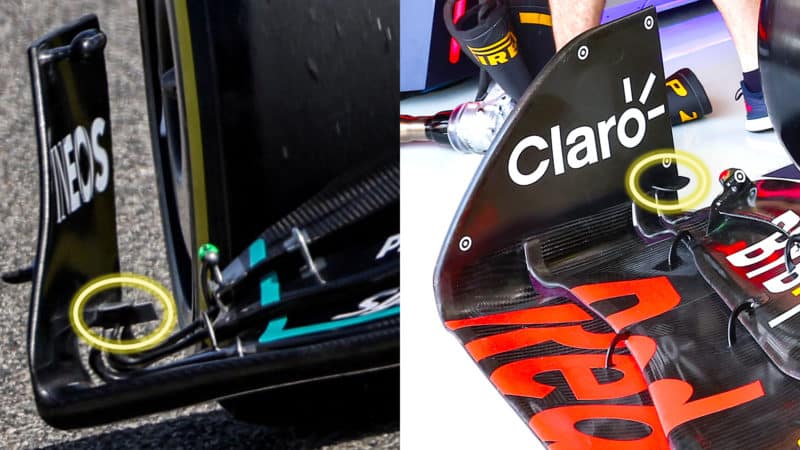
Winglets appear to be downwashing on Mercedes front wing endplate (left) but flatter on Red Bull
Getty Images
Though not a part of the floor, several teams including Mercedes, Red Bull and Aston Martin have devised small winglet setups on the inboard, rear edges of their front wing endplates, presumably to try and redirect the outwash from the wings (which does have an impact on the wheel wakes, and thus floor flows). The form of these winglets is quite different from car to car: Red Bull’s, for example, has relatively flat profile, while Mercedes has used a small cascade which could be being used to create a downwash effect.
Side pods – again
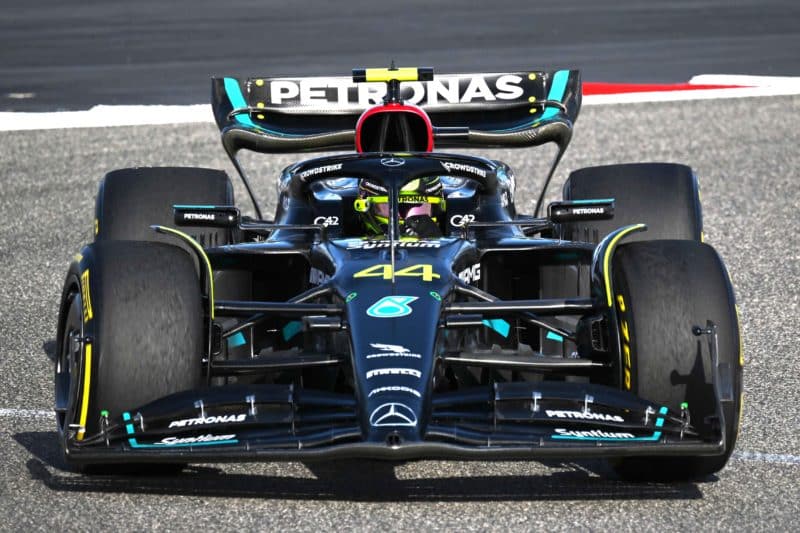
Mercedes W14 front view is very different….
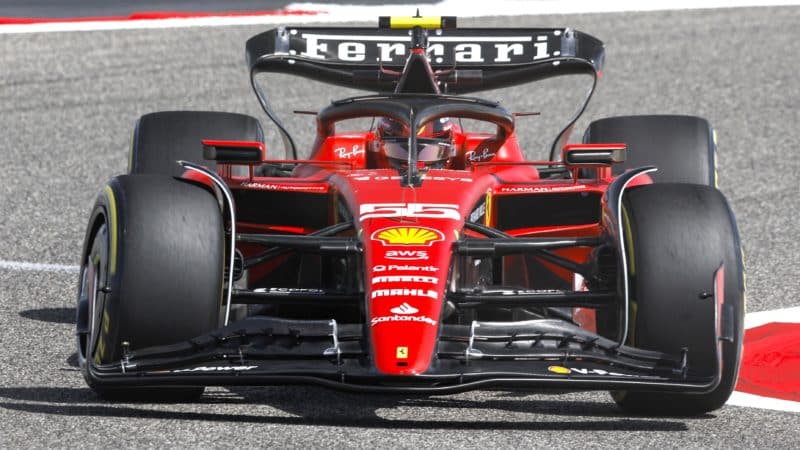
…to Ferrari’s SF-23
One only needs to look at the radically different frontal profiles of the Mercedes W14 and Ferrari SF-23 to realise there are many ways to skin the sidepod cat. The sidepods have many roles to fulfil, both aerodynamic and packaging and they must be viewed in conjunction with the overall aero concept of a given car.
Mercedes is notable in its pursuit of the so-called ‘zero-pod’ concept, though for 2023 it appears to have opened up the side pod inlets to a certain degree. Every team is striving to shrink wrap the internal components as tightly as possible, in order to maximise their freedom of design for the aero.
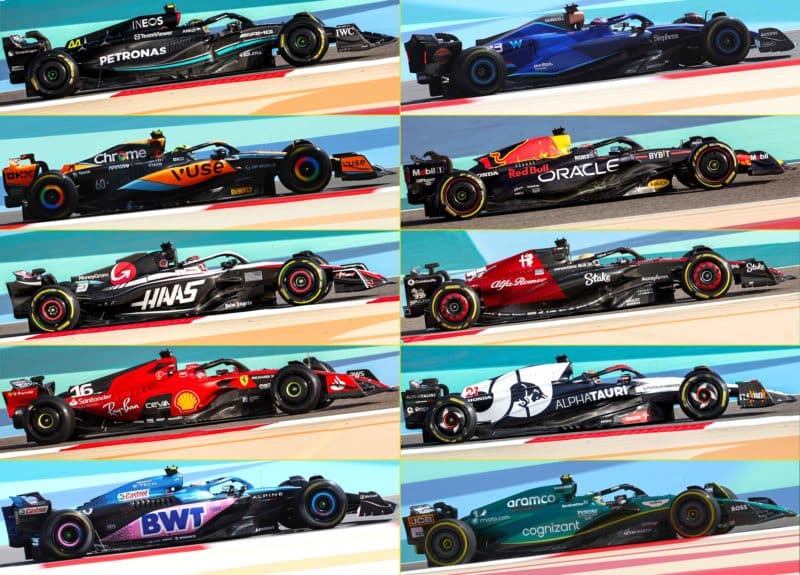
2023 sidepods are generally tighter with bigger undercuts
Getty Images
In 2022, several teams left considerable ‘head room’ in terms of sidepod volume, giving scope for future developments, which are now coming to fruition. For example, most (with the exception of Mercedes’ and Ferrari’s concepts) now have more aggressive undercuts to the side pods, presumably to maximise the flow heading to the top of the rear diffuser, made possible by ever tighter packaging of the internal components. Linked to this theme appears to be a further move by many towards packaging more cooling along the centreline of the car, freeing up space around the lower sections of the mid-bodywork.
Smaller changes
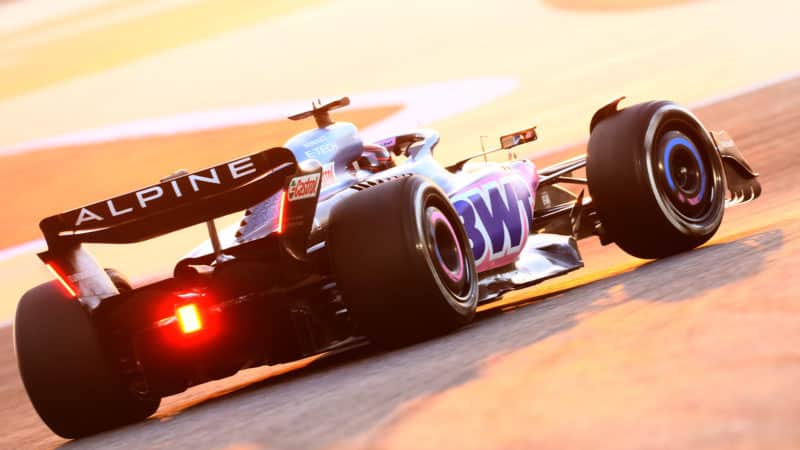
Alpine has switched to pushrod suspension for 2023
Getty Images
Of course, there are a myriad of small technical details that come to light during testing, most of which are of very little consequence unless one is privy to a team of aerodynamics engineers plus a bunch of CFD and wind tunnel time. However, there are a few interesting details on show.
Alpine, for example, has opted to run with pushrod rather than pullrod rear suspension for ’23. The team is shifting its philosophy primarily for aero gain, as team technical director Matt Harman explained: “We’ve made changes to both the front and rear suspension and we’ve unlocked some performance from the front wing and front flow structures that has allowed us to produce further performance into the diffuser, which has brought a slightly different rear suspension concept.”
Ride-height rules
Across the board, teams are also adapting to new ride-height rules, intended to help combat the porpoising issues seen through 2022. A 15mm increase for 2023 may not sound like much, but it could have a significant impact on the performance potential of some teams’ designs. However, judging by the behaviour of cars running in Bahrain, the phenomenon is far from completely eradicated with some cars clearly subject to vertical oscillations, visible on the smoother, high speed sections of track.
Weight limit
Finally, hitting the weight limit (798kg) is a constant challenge for teams and only gets harder as cars evolve. New aero additions coupled with other updates under the skin all add small, but significant, weight gains that must be clawed back somewhere. It appears that one area teams are targeting in 2023 is paint, with many cars sporting plenty of black accents in the liveries, perfect for disguising bare carbon. The savings are small, maybe a few hundred grams here or there (the total paint used is normally not more than 1-2kg) but useful none the less.
